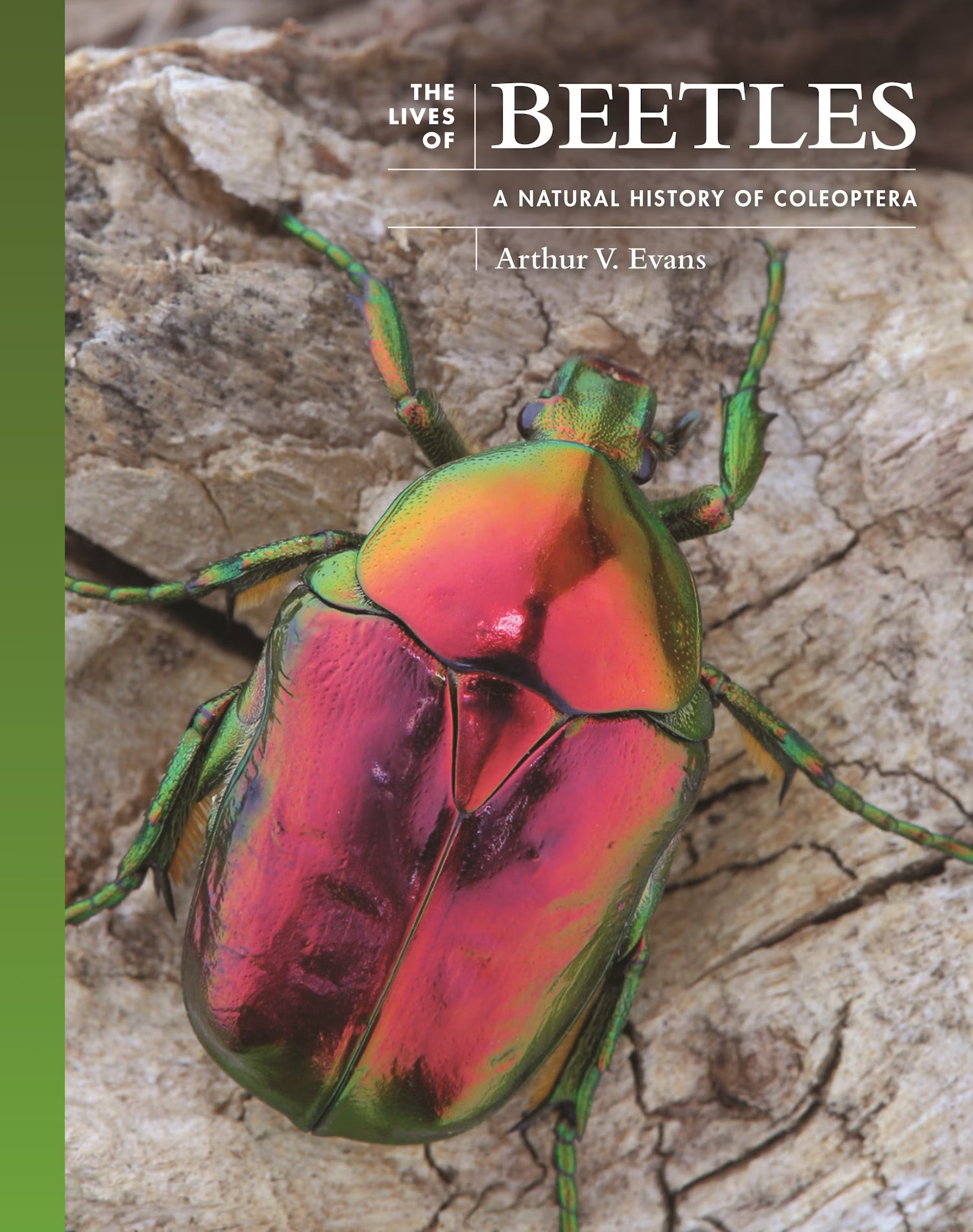Arthur V. Evans
Princeton University Press
2023
ISBN: 9780691236513
Reviewed by Beulah Garner
The Lives of Beetles: A natural history of Coleoptera written by the eminent entomologist Arthur V. Evans substantially adds to the canon of useful reference books on Coleoptera. A book for the academic, the enthusiast, or the yet to be converted, it begs to be read. Today, so much is known about beetles, from the fun facts to the academic, and a new book on the subject must work hard to contribute something novel. This abundance of information, sourced increasingly from the internet, does require a synthesis and modernisation from the more traditional texts on beetles that were either regarding their taxonomy and identification or aspects of ecology and physiology. The Lives of Beetles ably synthesises our current understanding of the diversity and function of this enigmatic group of insects.
The book has an introduction, then sections including Structure and Function; Evolution, Diversity and Distribution; Communication, Reproduction and Development; Feeding habits; Beetles in Medicine, Science and Technology, and Study and Conservation. These chapters stand alone as immersive primers into the much more complex topics they represent. Each chapter is divided into enticingly titled subchapters such as ‘Adapted for success’ in the chapter Structure and Function. The nine selected beetle species profiles at the end of this chapter demonstrate the extremes of structure and function that have contributed to the evolutionary success of the beetles as well as their ability to diversify and adapt to extreme environments. For example, the Blue Death-feigning Beetle, Asbolus verrucosus (LeConte, 1851) illustrates well how beetles can adapt to extreme desert environments. The contents page would benefit from indexing of these subchapters as each could be read as a stand-alone piece.
Each chapter follows this theme, featuring nine best-of-the-best beetles whose life history and morphology would be fascinating to any reader. The selection of beetle species highlighted to represent elements of each chapter could only have been made by an expert such as Art Evans. Given the immense diversity of the over 400,000 described species, how does one choose? Those beetles selected for special treatment provide just a glimpse of the multitude of beetle stories still waiting to be told but are representative of the diversity of families and their distribution throughout the world.
The final main chapter on Study and Conservation effectively gives the reader a sober insight into how beetles are surviving in our modern world. The message on how we need to act and conserve our species is highlighted by numerous examples of endangered and threatened, and geographically isolated beetles.
Further shorter chapters include further reading, a glossary of terms, and the currently accepted taxonomic classification of the described beetle families. Here the taxonomic classification would benefit from being linked to the chapter on Evolution, Diversity and Distribution. In Further Reading, given the author’s deep dive into the most significant academic literature, a longer and more diverse list of suggested articles would help to steer the engaged reader to deeper learning. The Lives of Beetles: A natural history of Coleoptera is very clearly organised with lots of white space, allowing the easy digestion of so much information and really showcasing the outstanding photographic images. The photographs are further complemented by digital illustrations employed to help describe beetle morphology and behaviour, thoroughly modernising how we view beetles in print. This book is deeply engaging, so colourful, such fun and yet scientifically informative, with reliably sourced information from peer reviewed journals. It comes highly recommended.


